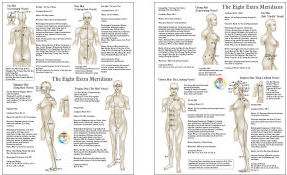Acupuncture & TCM Articles

Articles by Mary Elizabeth Wakefield, LAc, Dipl. Ac., MS, MM
Mary Elizabeth Wakefield has 27 years of clinical professional experience as a healing practitioner, and is a licensed acupuncturist, certified by the NCCAOM, a Zen Shiatsu practitioner, massage therapist, a cranio-sacral therapist, Acutonics® practitioner, opera singer, herbalist and Interfaith minister.
She is a graduate of Tri-State College of Acupuncture in New York City, and has studied with such notable acupuncturists as Carolyn Bengston, Kiiko Matsumoto, Dr. Mark Seem, Arya Nielson, Jeffrey Yuen, Dr. Richard Tan, Fabien Maman, Yitian Ni and Donna Carey.
Her knowledge of facial acupuncture and acupressure is based on the work of Jacques Lavier, the "Father of French Acupuncture." She has also studied extensively with her teacher Carolyn Bengston, who is a master of interdermal needling for the face.
For more information about Ms. Wakefield's Constitutional Facial Acupuncture Renewal™ seminars, please visit her website at www.chiakra.com
The Eight Extraordinary Meridians: Our Genetic Imprinting
By Mary Elizabeth Wakefield, LAc, Dipl. Ac., MS, MM and Michel Angelo, MFA
The eight extraordinary meridians, pathways of energy (qi), run deep within our bodies, and supply the 12 regular meridians with qi and blood, supporting our DNA or genetic heritage.
They have no direct connections to the organ systems and, with the exception of the pairing of du mai and ren mai, share points with the 12 regular meridians. By utilizing the points on the hands and feet associated with each meridian pairing contralaterally, the practitioner duplicates the flow of energy called the "microcosmic orbit" in Oriental medicine; this can be likened to a figure 8 or the infinity symbol.

The journey along this path recapitulates the origin of life as we understand it, from the formless, timeless state that precedes incarnation, to the emerging duality of yin and yang, and the further division of the human embryo via the process of cell division, or mitosis, that ultimately results in birth. In the same manner that life is spontaneously generated from the semblance of death, so life ultimately returns to the void, mirroring the great cycle of existence. Hence, these eight meridians are revered in Oriental medicine as precious, marvelous, extraordinary, curious, amazing - you name the superlative!
Qi Jing Ba Mai: The Extraordinary Conduits, or the Eight Marvelous Ones
The Chinese words for the eight extraordinary meridians describe their character most succinctly. Qi is an energy that is likened to an "a-ha" - a flash of enlightened understanding. Jing penetrates our ancestral roots, and makes up our DNA matrix; it is the precious essence of life. Ba means "eight." Mai symbolizes the movement in the meridians.
Ren: Conception Vessel
The master point for the Ren meridian is Lung 7, which is coupled with Kidney 6, on the yin qiao mai channel. The Conception Vessel relates to responsibility for, or fostering of, the process of birth, whether it be that of a child, a creative idea, or an endeavor.
The Ren receives and transports the qi of all the yin meridians, and therefore regulates the uterus, menstruation, menopause, pregnancy, etc. Since the master point is on the Lung channel, it is associated with respiratory syndromes, e.g., childhood asthma.
The pairing of ren mai and yin qiao mai, with its attendant Lung/Kidney relationship, energetically affects the lungs, chest and throat, and is very useful in a clinical situation, especially in addressing breathing imbalances.
Du: Governing Vessel
The master point of the Du Mai is Small Intestine 3; this meridian governs the qi of all the yang meridians. It is coupled with the yang qiao mai, whose master point is Bladder 62. This meridian pair is effective in treating stiffness in the shoulder, neck and back, and also regulates the inner canthus of the eye. When this coupling of meridians is utilized in treatment, the entire spine is addressed. It also nourishes the brain, and treats dizziness and tinnitus. On an energetic level, the Du relates to transformational cycles, survival issues, and groundedness in the world. Psychospiritually, issues of becoming "upright" and independent, as well as risk-taking, are relevant.
Chong Mai: Penetrating Vessel
The master point of the Chong is Spleen 4, which is combined with Pericardium 6 on the yin wei mai channel. This pair affects the heart, chest and stomach. This "vital passage" regulates the flow of qi and blood in the 12 regular meridians, and is significant in gynecological disorders, digestive issues, prolapses, and problems with the heart. Energetically, it relates to intergenerational patterns, issues arising from abuse, and cellular memory. Psychospiritually, an imbalance in the Chong meridian negatively impacts our self-acceptance and self-love.
Weis: Linking Vessels
The yin and yang wei mai function as connecting or networking vessels. They also help to maintain the balance of the body´s yin and yang. Because of this, they relate to the transitions involved in the aging process, and the accompanying transformation of yin or yang energies.
Yin Wei Mai
The yin wei mai is paired with the Chong Mai, as previously stated. This combination permits energetic access to the Neiguan, the inner gate to the self. Psychospiritually, this vessel is concerned with the meaning that we derive from life, and helps us to respond to life with clarity and compassion.
Yang Wei Mai
The opening point of the yang wei mai is Triple Heater 5, which is coupled with Gall Bladder 41 on the Dai Mai. This combination dominates the exterior of the body, and is relevant in conditions of chills and fever. Energetically, it regulates our old habits and patterns, and the release of these pre-established modes of behavior that prevent us from evolving. Psychospiritually, since the yang wei mai represents the last stage of defense before the body is penetrated by an invading pathogen, this meridian can be used to treat issues of terminal illness, such as cancer or AIDS.
The Qiaos: Heel Vessels
The qiao vessels originate on the inside/outside of the heel, add agility to the body, and govern motion, especially that of the lower limbs.
Yin Qiao Mai
This channel is paired with the Ren Mai; with energetic imbalances in this meridian, manifestations include left/right imbalance, inversion of the foot, pain in the eyes, somnolence, etc. Psychospiritually, there are issues of self-trust, abandonment, depression, and feelings of unworthiness.
Yang Qiao Mai
The yang qiao mai is paired with the Du Mai; syndromes include a sensation of "walking on a slant," excessive thinking, and a generalized feeling of being overwhelmed and out-of-control. Conditions such as insomnia, epilepsy, facial paralysis and Bell´s palsy (related to wind in the face) are relevant.
Dai Mai: Belt Meridian
The master point of the Dai Mai is Gall Bladder 41, paired with Triple Heater 5 on yin wei mai. This combination impacts the retroaurical area, the cheek, and the outer canthus of the eye.
Energetic issues involving the Dai Mai, or zuling, can manifest in a person "near to tears" from frustration, indecision or low self-esteem. Psychospiritually, this meridian is a repository for unexpressed emotions and psychological complexes that require transformation. The repression of these shadow aspects of the personality may give rise to dampness of body/mind/spirit.
Conclusion
In working with the eight extraordinary meridians in a treatment such as facial acupuncture, the practitioner engages the jing, or genetic level, of the patient. Inherited conditions such as asthma, heart dysfunction, or digestive distress can be addressed constitutionally at a "DNA" level. Often, we can ameliorate a genetic predisposition to aging, promoting quality of life, enhanced health and increased longevity.
Because such treatments tap into the very essence of an individual´s humanity and destiny, it is important for the practitioner to respect and honor the unique power and transformative potential that can be unleashed in the process.
|
